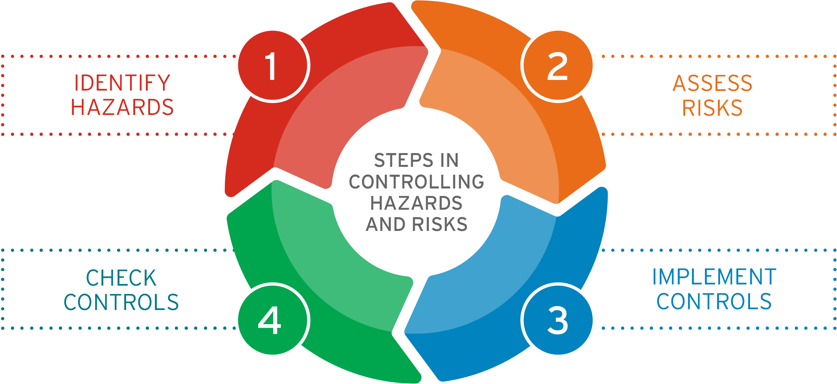ASSESSMENT
YOUR GENERAL ENVIRONMENTAL DUTY (GED)
- A lot of activities in automotive recycling businesses can create pollution and waste.
- This can put people and the environment at risk of harm.
- All businesses have a responsibility to prevent and manage the risks of harm to people and the environment from their activities…..
HOW CAN I MANAGE ENVIRONMENTAL RISKS?
This risk management process helps a business get started:

Steps in controlling hazards and risks
| Step | Action | Description |
|---|---|---|
| 1 | Identify hazards | What hazards are present that might cause harm |
| 2 | Assess risks | What is the level or severity of risk, based on likelihood and consequence |
| 3 | Implement controls | What measures are suitable and available to the business to eliminate or reduce a risk |
| 4 | Check controls | Review controls to ensure they are effective |
Step one: identify hazards
A close workplace inspection encompassing all the hazards identified in this website, and others relevant to your workplace, is the first step in meeting your GENERAL ENVIRONMENTAL DUTY
Step two: assess risks
The hazards identified during step 1 must be assessed to determine how they could lead to harm, how severe that harm could be and how likely it is to happen.
Risk assessment is a process for building knowledge and understanding of hazards and their associated risks so decisions can be made on how best to control them.
The following steps should be taken:
- assess the likelihood of a hazard causing an impact
- assess the consequences, or severity, of each impact
- calculate a risk rating for each hazard
Assess likelihood
The first step is to assess the likelihood of a hazard causing harm. Likelihood is based on what is known, or should be known, about the hazard and the way circumstances and activities affect the hazard.
Likelihood can be rated as:
- certain: expected to happen regularly under normal circumstances
- very likely: expected to happen at some time
- likely: may happen at some time
- unlikely: not likely to happen in normal circumstances
- rare: could happen but probably never will.
Key concepts to establish likelihood
| Key concepts | Explanation |
|---|---|
| Previous occurrence | Assessing what has happened previously, such as incidents and near misses, gives a good indication about likelihood. It is important not to just consider your business but think about occurrences across the industry. |
| Current controls | Consider what controls are already in place and how effective these are. |
| Frequency | A hazard may exist all the time or only sometimes. The more often the hazard is present, the greater the likelihood that it will cause harm. |
| Changes in conditions | Operating conditions change over time and vary throughout the year. These changes can influence likelihood of a hazard causing harm. |
| Behaviour | The way people act or behave can affect the likelihood of a hazard causing harm. For example, people may make mistakes, misuse items or act spontaneously during an incident. |
Typical questions to ask to establish consequence
| Typical questions | Explanation |
|---|---|
| What kinds of harm could be caused? | There are many kinds of harm and a single incident might cause multiple types of impact. For example, the same incident might cause harm to both the environment as well as human health. |
| What factors could influence the severity of harm? | The consequence of a risk may vary under different circumstances. For example, a fire might be more intense and harder to control during warm and dry weather. |
| In what ways could human health or the environment be harmed? | It is particularly important to consider impacts to sensitive ecosystems, such as wetlands and waterways, as well as surrounding residential areas, hospitals, schools and roads. |

